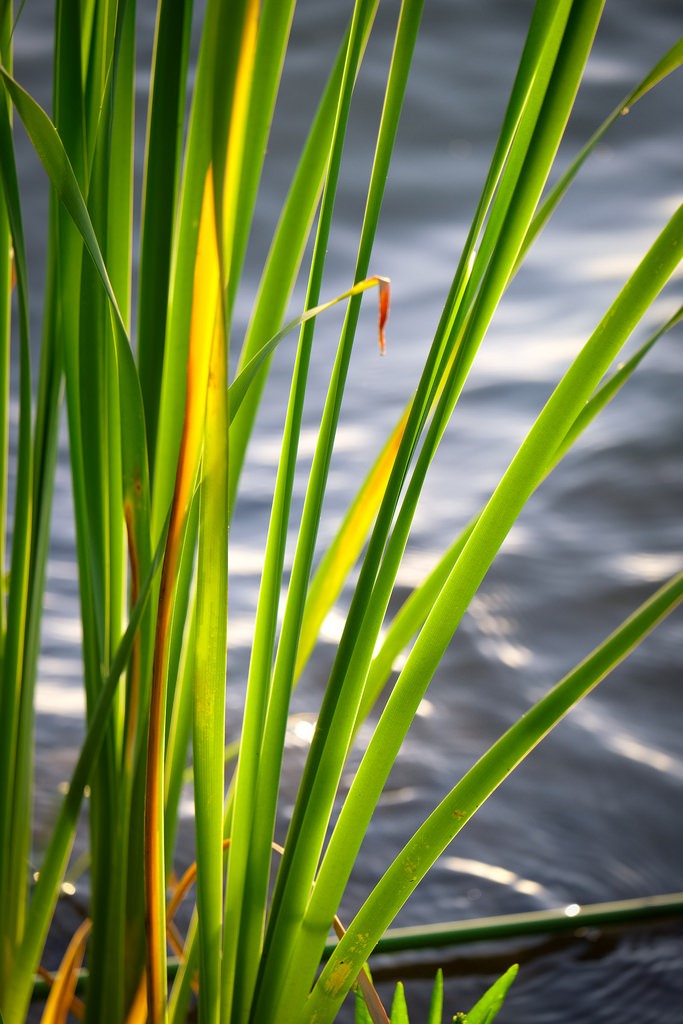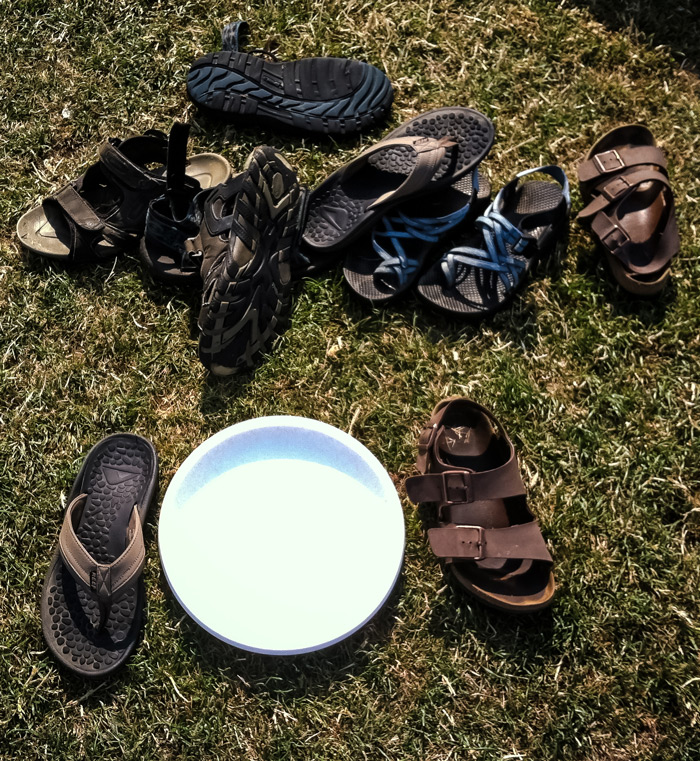Hole in the Clouds
Jun 22, 2014
 The grass grows tall here, deep in the water of White Rock Lake, East Dallas, Texas.
The grass grows tall here, deep in the water of White Rock Lake, East Dallas, Texas.
Even if you don't see any snakes in the picture, there's something about this place that looks potentially very snakey. They could be hiding hereabouts.
Texas
waterscape
lake
Dallas
White Rock Lake
reeds
grass
(Image credit: Pix19)
Mar 14, 2016
 Even in organized tournaments, an ultimate frisbee game generally features no referee or scorekeeper. Teams call fouls on themselves and keep track of the score using a spare frisbee and a jumble of shoes; after each goal, a shoe is moved to one side or the other of the frisbee, depending on which team made the score. When this picture was taken early in a game at the 26th annual Potlatch tournament over the July 4th weekend in Redmond, Washington, the score was tied, one up.
Even in organized tournaments, an ultimate frisbee game generally features no referee or scorekeeper. Teams call fouls on themselves and keep track of the score using a spare frisbee and a jumble of shoes; after each goal, a shoe is moved to one side or the other of the frisbee, depending on which team made the score. When this picture was taken early in a game at the 26th annual Potlatch tournament over the July 4th weekend in Redmond, Washington, the score was tied, one up.
Despite what seems obvious from this picture, ultimate frisbee players don't usually compete barefoot. Out on the field, they wear soccer cleats or running shoes.
And if the goal scoring should happen to outpace the number of available scorekeeping shoes, one shoe can be turned sideways to stand in for five vertical shoes, much as tick marks are slashed sideways in bundles of five.
The Potlatch is among the largest tournaments in the ultimate frisbee world, with teams coming to compete from as far away as Korea, Alaska, and the east coast of North America. In the game being scored above, the Garden Gnomes of Olympia, Washington, eventually fell to a team from San Francisco; the Gnomes have changed their name to O'School and signed up to try again at the 2016 Potlatch.
sports
summer
ultimate frisbee
shoes
grass
score
Olympia, Washington
Jun 14, 2016
 The prairie lands around the southern end of Puget Sound were created by ice and sustained by fire.
The prairie lands around the southern end of Puget Sound were created by ice and sustained by fire.
Retreating glaciers some ten thousand years ago left behind vast stretches of land scraped bare of trees, initially supporting only grasses and other low-lying scrub, in a climate generally so humid that grassland would normally yield to forest. Much of this post-glacial prairieland did revert to forest, but by burning off the old growth every spring, Native peoples prevented tree seedlings from taking root and thus maintained many thousands of acres as grassland for grazing their horses and other livestock.
However, the prairies of Western Washington were the first land grabbed by invading Europeans; lacking tree cover, they were ready-made for cropland and pasture. Farms and cities grew. The ancient practice of annual burns was abandoned, and big trees were soon thriving.
Only a few tiny remnants of these prairies remain, grassy islands in a sea of trees, and they are ecologically degraded now to varying extents. Much of the remaining acreage is entrusted to the Center for Natural Lands Management, a nonprofit that attempts to restore and preserve the South Sound prairies. Annual burning regimes have been reinstated.
Above is a bit of the grass in Glacial Heritage Preserve, a prairie in Thurston County, Washington, that is open to the public only on volunteer work days.

Washington
summer
grasses
grass
Glacial Heritage Preserve
groundscape
wildflowers
South Puget Sound
Thurston County
(Image credit: Fuji T)
 The grass grows tall here, deep in the water of White Rock Lake, East Dallas, Texas.
The grass grows tall here, deep in the water of White Rock Lake, East Dallas, Texas.

